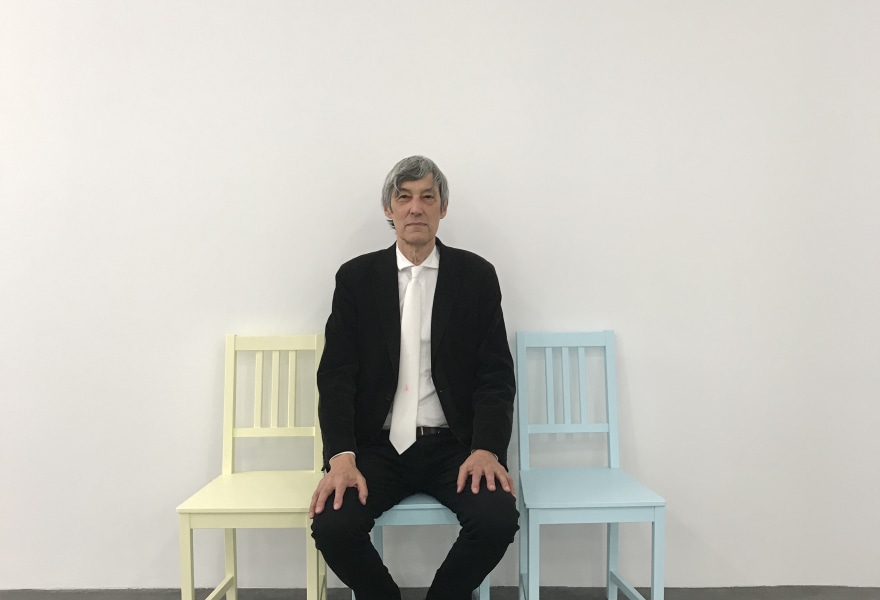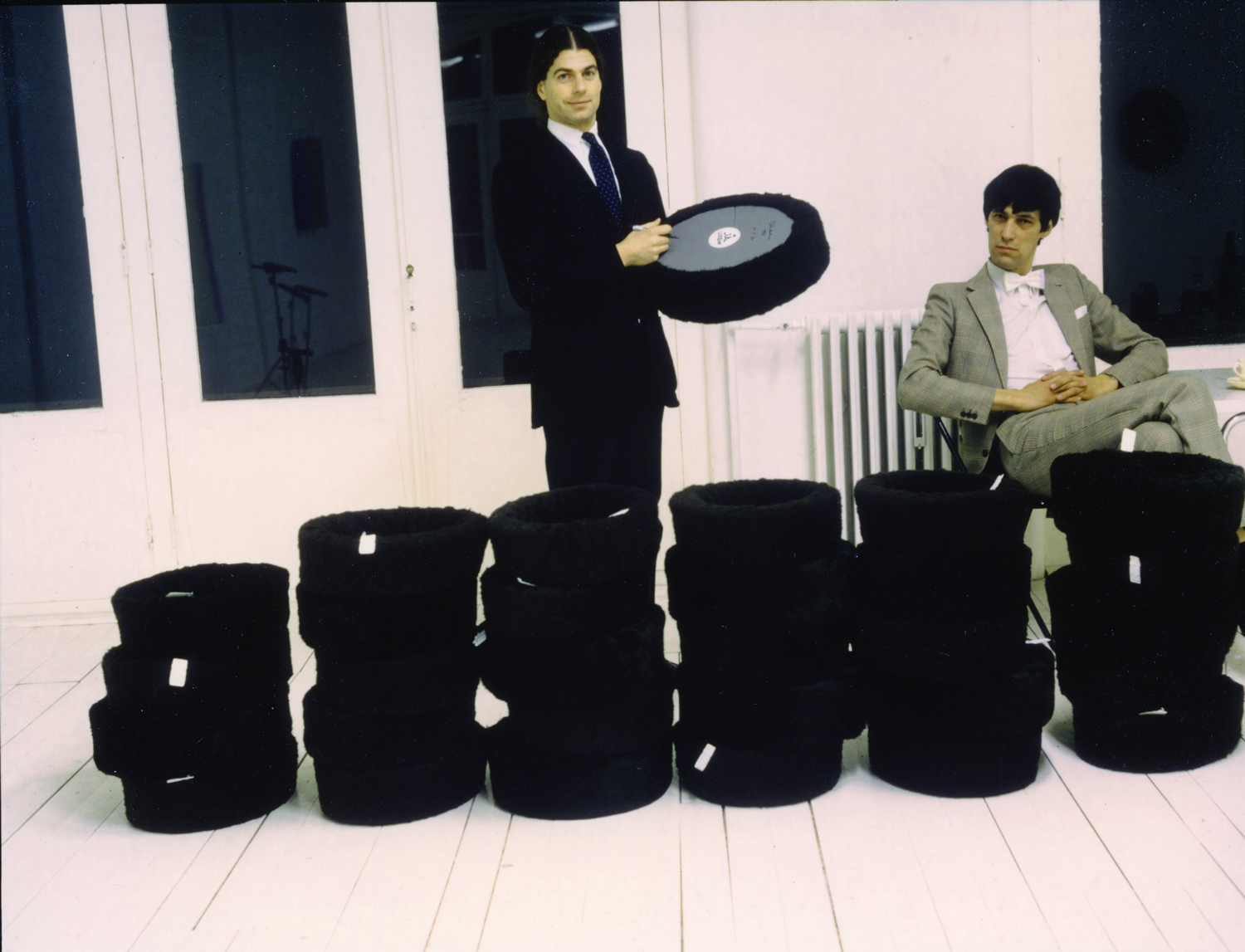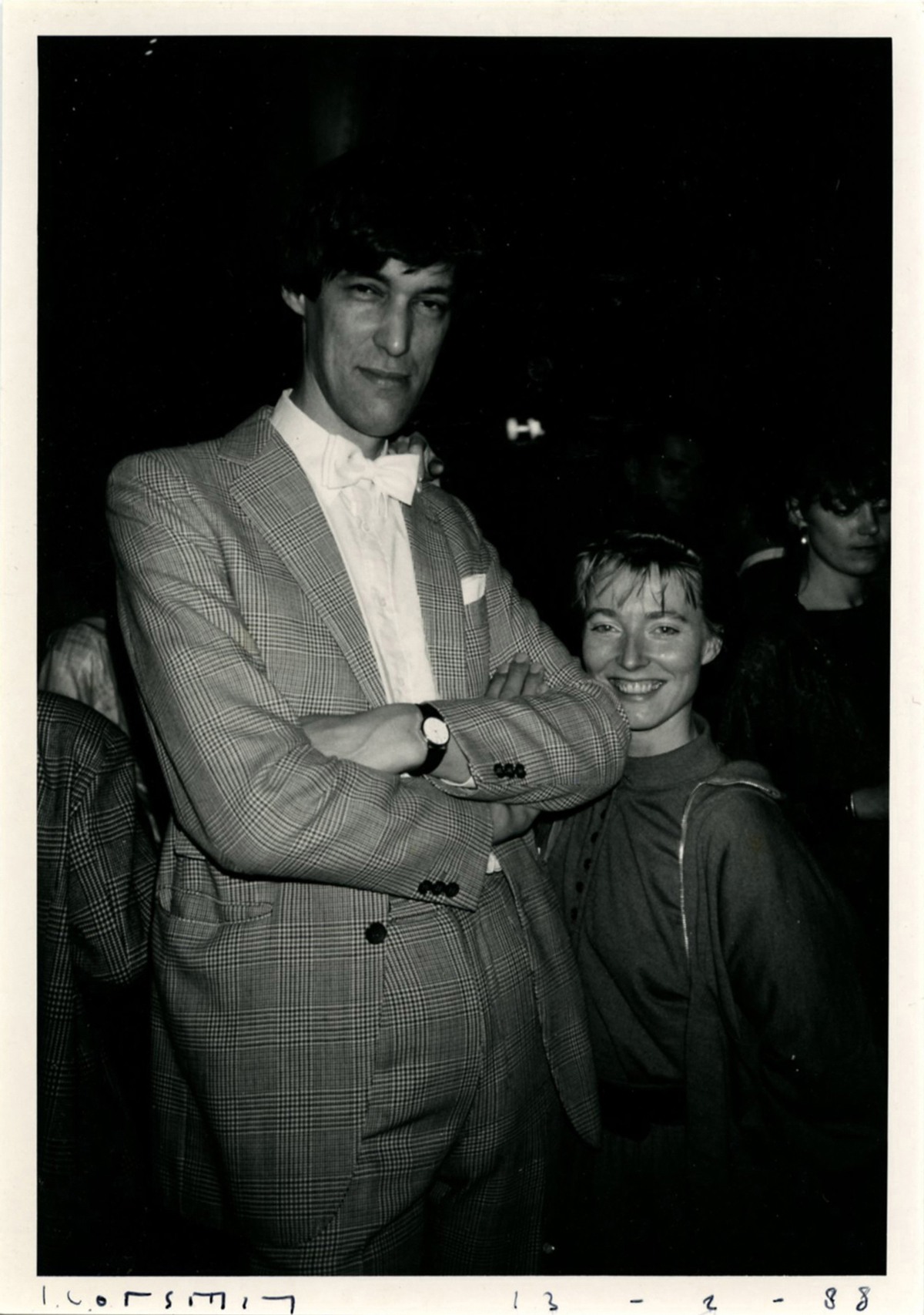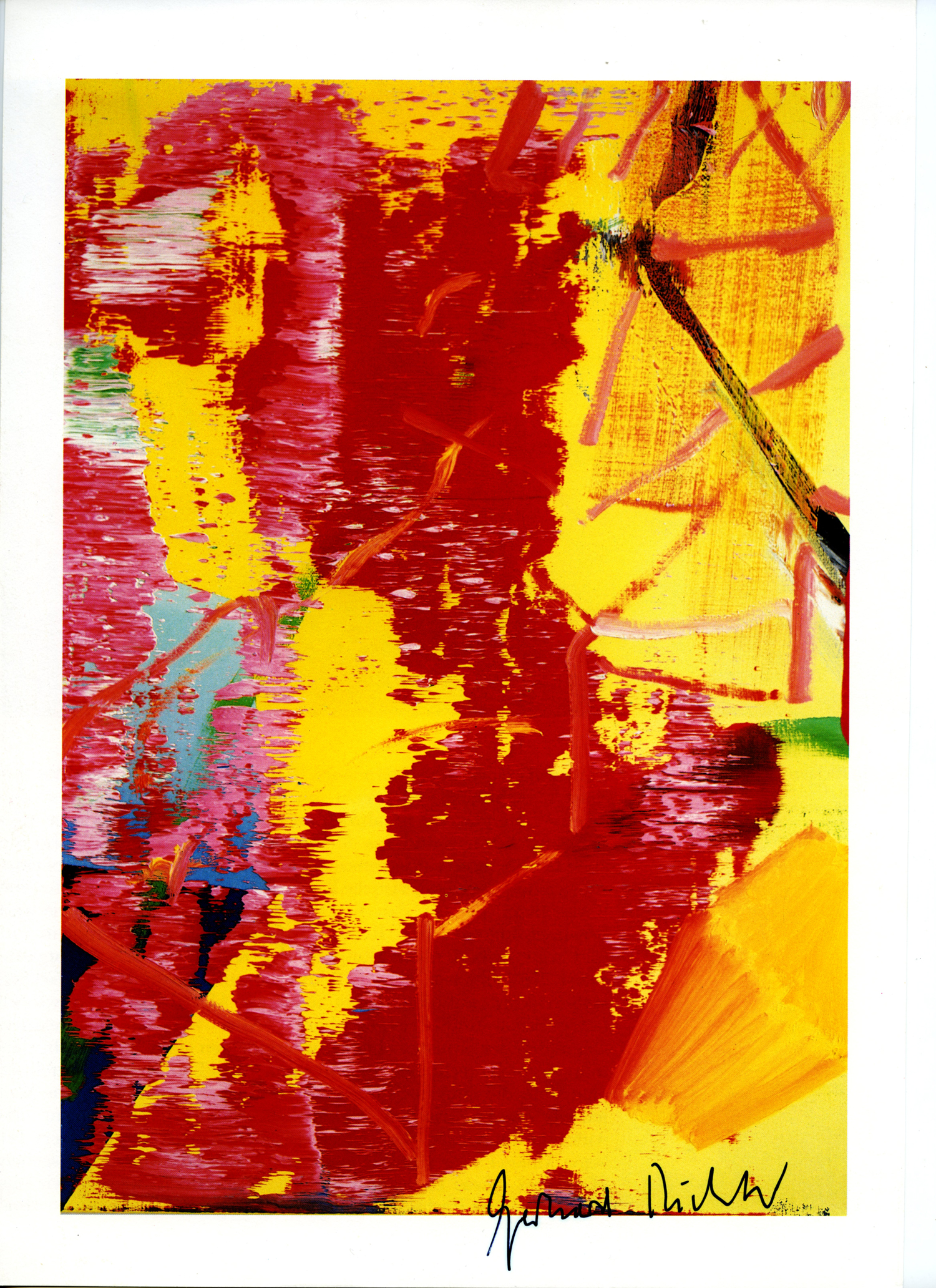06 august 2021, Oscar van Gelderen
The gallery of… Kees van Gelder
We’re you exposed to art while growing up?
My parents lived in a detached house that they had designed by architect Van Harreveld in 1959-1962, a sort of bungalow-villa on a huge plot of land, with an orchard and vegetable garden. The building stood in the middle of it, with an internist's practice, administration room, waiting and consulting room and attached garage. When it had just been completed, my father – who had now separated from my mother – looked at the plowed bare plain around the house and said: 'It's a shame that the ground has to lie there unused for the next year. We have to grow kidney beans on it!” For years, I ate chili con carne, kidney bean soup, and meatballs with my brothers and stepsisters. The whole basement of the pantry was piled with kidney beans in big burlap bales.
In the village (25,000 inhabitants) my father was invariably addressed as 'doctor'. He was brought up strictly Reformed, went to church with all of us on Sundays and ‘forgot’ to invoice poor patients. He did everything for his sick fellow man; every evening at eleven o'clock he walked past his patients who were in the ward. And even though it was forbidden, he himself made the rheumatism cocktails to inject his patients with, who were especially grateful to him for their effectiveness. After his forced retirement, these patients were still queuing for a non-binding 'advice' in front of his home practice, which has now been banned by the Royal Dutch Medical Society. In his student days, Albert Schweitzer had given him a blow to the soul. My father never forgot what he once heard him say: "Respect for life, even if it's a mosquito."
In order to reach the tennis court, all I need to do was to cross the street in my tennis clothes and walk through the bushes. It's not without reason that I wrote poems featuring bars and lines, I sometimes think. A little further on was a library where I took home books about art as a 14-year-old. I also borrowed difficult, semi-scientific books on psychology (Sigmund Freud, Carl G. Jung) there. I didn't understand much of that, but when I got home I was in my room with a beautiful view of the tennis court, looking for a sentence or even half a paragraph that I understood. This influence from my childhood home in Terneuzen on the Princessestraat was stronger than the faded blue reproduction of a horse-headed face by Marc Chagall, which hung in our twelve-meter high entrance hall. When you talked there, it echoed like two echo wells at once. Anyway, getting something in the broad sense has a much bigger impact than getting something specific like getting art from home, I think. I'm afraid an environment is quite formative even if you do everything on your own.
In 1968, I lived on my own for the first time in my life for a year and a half. I was seventeen and living in London and I had found a room in Warwick Road for 40 GBP a week. It was in Earls Court, a neighbourhood commonly referred to as Kangaroo Valley because of the many Australians who lived there.
I was making £40 a week at the Horniblow Cox Freeman - Traffic Department advertising agency in Knightsbridge, and my father gave me £10 a week to live on. One day I bought a Penguin pocket with a cover that hit me like a sledgehammer: The Fixer, written by Bernard Malamud.
The silver-coloured cover had a small punched-out latticework through which – from the title page behind it – a sad face of a prisoner faced the reader. I had never seen something so impressively attractive. That image, with the punched-out barred window on the cover, I carried with me for years. Malamud’s writing wasn't bad either, by the way.
I was touched by something I found wonderful; the tangibility of it, and the image itself. Was this your first contact with the art world? You would say no, but I have a strong feeling that it has a lot to do with it.
What was your first job in a gallery? Or did you immediately start a gallery yourself?
In the summer of 1984, during a holiday in France, I had thought about how I would set up an artists' initiative, because starting a real gallery and having no knowledge of commercial matters at all; that didn't seem like a good idea to me. I had come up with the name 'Anableps anableps', the scientific name for the four-eyed fish. Since the early 1970s, I regularly bought artist's books by Franceso Clemente, Lawrence Weiner, Luciano Bartolini, Peter Downsbrough and many others from Harry Ruhé of Galerie A, which is where I also found remarkably evocative artist's books by John Armleder.
Following a reproduction of a drawing that was overwhelming for me, I decided to first invite John Armleder to participate. I wrote him a letter to explain why I thought he should participate and told about the black and white drawing I had seen in Kunstforum. At the top of the page came an increasing spiral downward from a black disk. At the bottom, an extremely stylized male with a black dot for his head ran out of the page. It really didn't make any sense, but it hit the mark for me. A Malamud blow, indeed.
After our first meeting in the Basel trainstation cafetaria – he was on his way to New York and I insisted on seeing him before the start of the gallery season and that was only possible in the station restoration there – he actually agreed. In the fall of 1985 I took over the space of Art & Project in the Planciusstraat. I asked the still fairly young artists who took part for a small fixed monthly contribution to the costs, in order to pay rent, light, gas, printing and opening costs.
No one had any money, it turned out. Partly under pressure from an artist friend, Sigurdur Gudmundsson, who had a studio in the same building, I decided to start a commercial gallery under my own name. I sold a house in Zeist – which I had inherited from my grandparents – and opened a gallery in November 1985 instead of an artists' initiative. That was a mistake, because I had no clue about business. Essentially, I was growing kidney beans, but in an art practice.
As a gallery owner, and like everyone else, you depend on the time you are in. I don't make the art myself. You are also dependent on the people you meet, and especially on those you attract and, above all, hold on to. My encounter with the first generation of Icelandic artists in Amsterdam (Sigurdur Gudmundsson, Kristjàn Gudmundsson, Hreinn Fridfinnsson) and especially the work and person John Armleder strongly defined the character of the gallery in the beginning. Armleder's artistry was a blow to my soul, on top of the smaller so-called descendant Schweitzer blow. For a while, the gallery showed work by mid-career (Sylvie Fleury, Ansuya Blom, Steven Parrino, Marijke van Warmerdam, Lily van der Stokker) and older artists (JCJ Vanderheyden, Henk Peeters, Olivier Mosset, John M Armleder ) with the occasional younger person in between, such as Nicolas Chardon and Elvire Bonduelle.
In the past three years I have found five artists in Groningen in one fell swoop: Kimball Gunnar Holth, Salim Bayri, Nokukhanya Langa, Lee McDonald and Henry Byrne. That was a miracle, which I grew into from the moment Kimball Gunnar Holth (who makes nothing) wanted to work with me. Kimball's work immediately appealed to me, without having ever seen the work, after Lily van der Stokker had visited his studio as a guest teacher and told me that he does not make anything. This rejuvenated Galerie van Gelder's exhibition programme in a natural way. It is a combination that resounds in what I show in the gallery in Amsterdam and at Art Rotterdam.
In retrospect, you can say that I have a soft spot for hardcore conceptual art, which does not do so well in the Dutch market. Dutch lyricism and figuration can hardly or never be found with me. Curiosity about the non-established and the unknown does predominate for me, where the aesthetic alone is not enough. There must also be something for me to be questioned, something extra, I believe. Consequently, I see no difference between looking in art and looking in epistemology, the philosophy of science or in graphology.
Like all cutting edge galleries in the Netherlands, Galerie van Gelder is innovative, but unable to become an international commercial and thus influential gallery in the long term. After more than thirty-five years, I have the strong impression that the impact of innovative art has to take root internationally very quickly in order to be able to continue afterwards. The best way to do this is as a group, so looks like an art movement. Only a few Dutch artists manage to do this. Here artists prefer to work individually; group formation is scary. The power of cutting edge galleries lies in the adventure of the unknown, and the choice to work with a young or older artist at an early stage and to invest time and attention in it. For as long as it lasts, because major galleries come knocking at your door when artists become successful.
What do you think is the best part of being a gallerist?
Watching-thinking-watching-watching with someone else, writing-looking. Then suddenly seeing something I've never seen like this before, only to be lifted two inches off the ground by a Copernican revolution I feel as a result of such a viewing moment. After a few minutes, or even a day, I land again. Sometimes a work can stay with me for years, in my head. Such a moment can simply take place while installing an exhibition, or in advance, during preparations or sparring in the studio or in the gallery.
I regard participating and thinking along in the broadest sense of these terms as a natural task while supporting and advancing the art displayed in my gallery. It's a cocktail. It does not matter whether it is about making a next work, dealing with heartbreak, helping to organize an exhibition abroad, exploring meanings in the work, dropping a line somewhere, making statements or preparing an interview. Everything is connected. Only in this way does the mentality of the artist live on; it's just like maintaining your physical condition. Or as Klaas Kloosterboer once ingeniously put it: 'The work doesn't matter'.

Associated Publishers in their booth at Art Basel Editions: John Gibson (New York), Daniel Buchholz (Keulen), John Armleder (Genève), Kees van Gelder (Amsterdam), 1992.
Which national / international galleries do you feel an affinity with?
Ellen de Bruijne and Lumen Travo are the top galleries in the Netherlands. That is not only based on the taste they have, but mainly because of the fact that they not only go with the times, but also go against that time, even though they depend on the time they are in. That makes these gallery owners into characters, and therefore their gallery programming into something different and special. Internationally, I like art initiatives and fledgling galleries that don't conform to the establishment, but that simply follow their own path. An example is Tilde in Amsterdam or Flat Gallery in Bellona, in Italy. A place that is not easy to find on the internet; in a simple street the owners do their thing against the tide. However, most interesting places don't last. For example, an interesting place like Simon Delobel’s Trampoline Gallery in Antwerp has closed its doors.
In an ideal world, which artist would you most like to represent?
This questions sounds a bit like: which artist would you most like to fall in love with? The desire to represent an artist is a construction of thought and not a desire that arises when you see some remarkable works or stumble upon an artist who offers something interesting. It's so easy to say what you wanted. Life is not in the desire for what is already there, that is also the case with art. The generosity of real life is in the people you meet and the way you meet them. The rest is made up in an ideal world that doesn't exist.
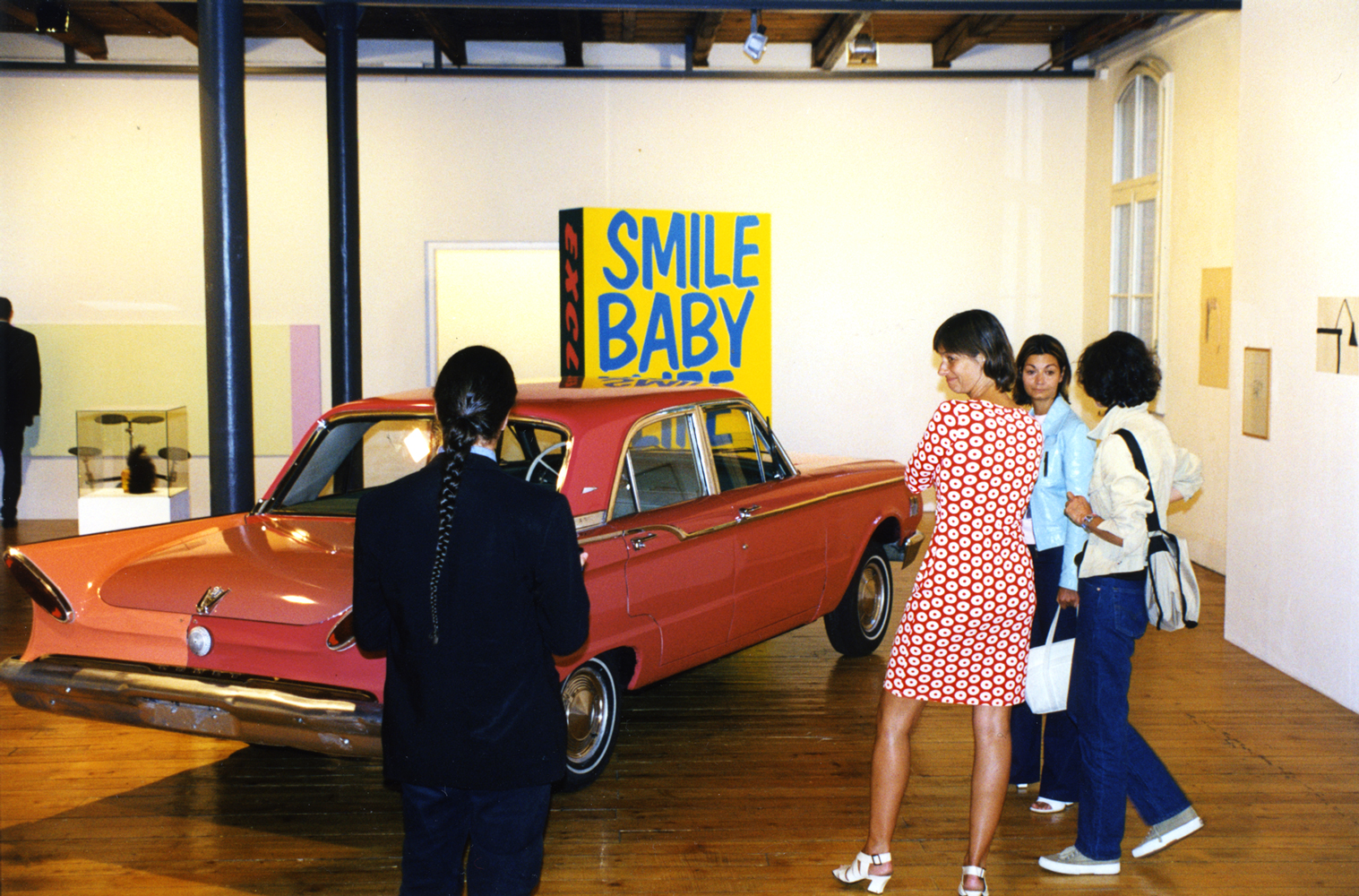
Opening exhibition ‘Bonjour, bon echo’ in CAC, Fribourg (CH): John Armleder, Marijke van Warmerdam, Sylvie Fleury, Véronique Bacchetta, 1997.
What has changed in the art world since you took your first steps?
The funny thing is that when you talk about change, you forget to into account that you have changed yourself as well. It's like looking at photons in quantum mechanics. Well, I won't be daft. During the disco era, and especially in the early eighties, I was surprised to see in Amsterdam that outgoing young people, like a bolt from the blue, neatly dressed had a fold in their pants. To me, that was the sign that rebelling against the establishment as a young person was over for good. I found it shocking to see that they could make such a bow to the establishment. From that moment on I saw the world around me differently. When I see young artists at the art academies now, I immediately sense their great concern about their future. How can I earn money, how do I pay the rent, how do I get on the roster of a successful gallery, what do I have to do for that, how do I survive with other skills? I understand that they live in a time of economic dips. I don't blame them, but their future – which they naturally have and can develop in themselves – is thus gagged. Very painful to see that.
What / whose work do you collect yourself?
Collecting in the sense that I realize that I am collecting, no, then I do not collect. It is true that I occasionally draw a work towards me. The same happens with an artist, every now and then. Or, conversely, an artist approaches me; as Ansuya Blom and Aditya Mandayam did and resolutely approached me. Gerhard Richter's signatures, pontifically put on the image; that struck me over twenty years ago. Since the age of nineteen I have had an interest in manuscripts, both in forensic and psychological terms. And with regard to the latter, I noticed that Richter is essentially raking (i.e. scraping paint over a canvas) with his signature in the middle of the image, as he does in his paintings. That gave way to a new vision of his work for me, because to this day nobody recognised that this is an undiscovered part of his oeuvre. I showed that discovery in the gallery during 2017Art Amsterdam Weekend. That was a world first.
It was great that Kees Keijer of Het Parool picked up on this and paid attention to it, and wrote a clear article about it. The stack now consists of a series of fifty to sixty catalogue pages and picture postcards. A few years ago (2016), during an opening at Galerie Janine Hofland, I almost tripped over a plastic garbage bag that was half blocking the entrance. It wasn't quite clear what that bag of sticking dry branches (and hidden parakeet feather) was doing there. It was a blow to my eye! I still had to ask an assistant if it was part of the exhibition. Janine introduced me to the artist, Thierry Oussou, who briefly told me about his surprise that you can just collect branches in the Vondelpark and that no one sees those branches as fuel, as he is used to in Benin. I immediately bought the work. Even if I only see image of it now, I will float an inch above the ground again.
A painting entitled 'My Country' (2011) by Kittji Kngwarreye, is also something I ran into. His expressionistic Field Paintings are not normally my style, but the same title he always gives to his paintings is genius. My country refers to the Australian soil of his Aboriginal ancestors. This title, which adds extra layer of meaning to something that initially excites the eye, makes the work a gem with substance and emotion.
I come across a multifunctional painting (2007) by Meschec Gaba in Marian van Tilborg's booth, or another time, somewhere else, a peculiar, energetically well-successful painting 'Kunst Krieg' (1983) by Bart Domburg. Really, I rather stumble upon it than that I am collecting it.
Has the pandemic changed the way you see the artworld?
No, except it shows that an invisible little bitch is trying to take over the world, like cutting edge galleries are trying to do.
See all artists represented by Galerie van Gelder
